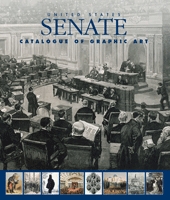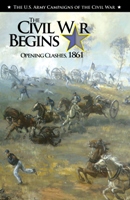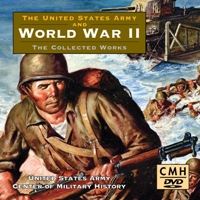As its title suggests, The Evolution of Forward Surgery in the US Army: From the Revolutionary War to the Combat Operations of the 21st Century from the Borden Institute describes forward U.S. Army surgery from the Revolutionary War to the present.
 From a historical perspective, this comprehensive book explains the advances in medicine and forward surgical care provided to wounded and ill soldiers on the frontline. The book opens with the role of military medicine and its impact on casualty care from the Revolutionary War to the War of 1812. In particular, it discusses the impact of disease during the Revolutionary War through the post-Civil War period.
From a historical perspective, this comprehensive book explains the advances in medicine and forward surgical care provided to wounded and ill soldiers on the frontline. The book opens with the role of military medicine and its impact on casualty care from the Revolutionary War to the War of 1812. In particular, it discusses the impact of disease during the Revolutionary War through the post-Civil War period.
Advancements in medicine continued to progress after the Civil War into World War I. By the time the U.S. Army entered into WWI, the Army Medical Department had evolved considerably. The book explains how new technologies in forward surgery impacted the “great war.” Advances in medications, lifesaving transfusions, and transportation vehicles such as motorized ambulances were introduced during this period.
Additionally, the research further describes Army forward surgery in WWII and its impact on an international level as well the wars that followed. It discusses the medical and surgical care of the various theater campaigns during WWII, particularly the China-Burma-India Theater of Operations, focusing on forward surgery. Forward surgery continued to evolve during the Korean and Vietnam Wars which introduced the need for Mobile Army Surgical Hospitals (MASH) and helicopter medical evacuations. These advancements provided immediate accessibility to administer surgical care to wounded soldiers near the front lines.
More recent wars showcase advances in radiography, blood collection, pain management, MEDEVAC units, anesthesia equipment, and improved operating room lighting for better surgical conditions and outcomes.
The text concludes with the designation of a formal forward surgical team and its challenges during the Global War on Terrorism as well as a final chapter discussion on homeland defense, contingency operations, and future directions.
Evolution of Forward Surgery in the US Army: From the Revolutionary War to the Combat Operations of the 21st Century is available in a variety of formats from various outlets. To learn more click here.
Find more resources published by the U.S. Army Borden Institute
The GPO Online Bookstore – Easy Access to Federal Publications
HOW DO I OBTAIN THIS RESOURCE?
Sign up to receive promotional bulletin emails from the US Government Online Bookstore.
Shop Online Anytime: You can buy a vast majority of eBooks or print publications —with FREE Standard Shipping worldwide— from the U.S. Government Online Bookstore at https://bookstore.gpo.gov.
- Click here to download The Evolution of Forward Surgery in the US Army: From the Revolutionary War to the Combat Operations of the 21st Century
- Click here to download Emergency War Surgery 5th US Revision
- Click here to download Out of the Crucible: How the US Military Transformed Combat Casualty Care in Iraq and Afghanistan
- Check out more resources from our Borden Institute collection
Visit our Retail Store: To buy or order a copy of any print editions from this collection at GPO’s retail bookstore at 710 North Capitol Street NW, Washington, DC 20401, open Monday–Friday, 8 a.m. to 4 p.m., except Federal holidays, Call (202) 512-0132 for information or to arrange in-store pick-up(s).
Order by Phone or Email: Call our Customer Contact Center Monday through Friday, 8 am to 4:30 pm Eastern (except US Federal holidays). From US and Canada, call toll-free 1.866.512.1800. DC or International customers call +1.202.512.1800. Email orders to ContactCenter@gpo.gov
Visit a Federal depository library: Search for U.S. Government publications in a nearby Federal depository library. You can find the records for most titles in GPO’s Catalog of U.S. Government Publications.
Find more than a million official Federal Government publications from all three branches at www.govinfo.gov.
About the author: Blogger contributor Trudy Hawkins is the the Sr. Marketing & Promotions Specialist in GPO’s Publication & Information Sales Division supporting the U.S. Government Online Bookstore.



 Posted by Trudy Hawkins
Posted by Trudy Hawkins 













































